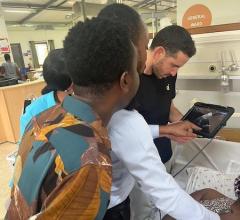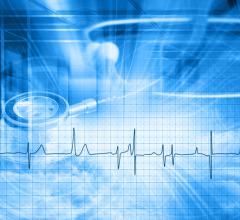
As healthcare systems continue to shift toward value-based care and proactive disease management, remote monitoring has become a cornerstone of chronic care delivery —especially in cardiology. Among patients with implantable cardioverter-defibrillators (ICDs) and cardiac resynchronization therapy devices (CRT-Ds), real-time monitoring offers the promise of earlier intervention, reduced hospitalizations and better quality of life.
Traditionally, remote monitoring has been delivered through manufacturer-specific platforms. While these systems provide direct integration with their respective devices, they often operate in silos — limiting interoperability and delaying actionable insights. In contrast, "universal" remote monitoring systems, which aggregate and standardize data across multiple manufacturers, are gaining ground as more agile, patient-centric alternatives.
A recently published study in Heart Rhythm — known as the EVIDENCE-RM study1— provides compelling support for the shift toward universal monitoring systems. Drawing on more than 69,000 patient records from the French National Health Data System (SNDS), the study analyzed clinical and medico-economic outcomes for ICD and CRT-D patients managed through a third-party, alert-based remote monitoring system versus traditional manufacturer-specific systems. Notably, the benefit was consistent across both major cardiac device cohorts — ICD and CRT-D patients — suggesting that universal monitoring approaches could apply broadly across electrophysiology programs.
The results were striking: patients monitored through the universal system experienced a 26 percent reduction in all-cause mortality, alongside a 4 percent decrease in heart failure-related hospitalizations, 2 percent decrease in all-cause hospitalizations and 4 percentdecrease in length of hospital stays.
A System-Wide Challenge
Managing patients with implantable cardiac devices is complex. These individuals often have advanced heart disease, multiple comorbidities, and frequent risk of hospitalization due to arrhythmias or worsening heart failure. Remote monitoring is intended to mitigate these risks by providing early warning signs of clinical deterioration.
However, device-specific monitoring platforms — provided by device manufacturers — can increase the workload for providers who are often managing patients with different devices from multiple companies. These platforms often vary in how they categorize, format and display data. There are also differences in the frequency of transmissions and the types of alerts generated. This lack of standardization not only increases the cognitive burden on clinicians but also forces them to toggle between multiple platforms and adapt to the unique layout, terminology, and data presentation of each system — adding friction to an already complex workflow.
What’s more, these systems may not integrate smoothly into broader health IT ecosystems, limiting opportunities for advanced analytics or population health initiatives ultimately reducing the efficiency of clinical decision making. As a result, the full potential of remote monitoring — early intervention, trend analysis, and streamlined care — is not always realized.
A Scalable Alternative
The universal remote monitoring model, as tested in the EVIDENCE-RM study, seeks to address these challenges by automatically consolidating data from all major cardiac device manufacturers into a unified platform. The approach simplifies workflows and enables standardized, AI-assisted algorithms to triage alerts and highlight clinically relevant trends across patients and devices.
What distinguishes this model is its alert-based architecture — designed to prioritize actionable data across patient populations and reduce information overload for care teams. The system aligns with current standards like FHIR (Fast Healthcare Interoperability Resources), making it more adaptable within modern electronic health record environments.
In the EVIDENCE-RM study, patients managed using this approach had notably better outcomes than those using manufacturer-tethered platforms. Beyond the clinical impact, the study also revealed significant medico-economic advantages, including a nearly 18 percent reduction in hospital-related costs and a favorable cost-effectiveness profile — demonstrating that a universal monitoring system can reduce costs while improving efficiency and value across the continuum of care.
Beyond the Platform
Overall, these findings suggest that the structure and functionality of the monitoring system itself — not just the fact of being monitored — can influence clinical outcomes. In other words, it's not only whether patients are monitored that matters, but how and through what kind of interface.
One reason may be that universal systems are better able to flag early indicators of deterioration by leveraging data across multiple device types. For clinicians, that means faster response times, less manual reconciliation and more consistent follow-up.
This has important implications for care teams tasked with managing large populations of heart failure patients as well. Instead of toggling between systems or relying on vendor-specific training, providers can access data through a unified interface with built-in clinical logic — freeing up time for patient engagement and intervention.
Furthermore, by reducing avoidable hospitalizations and enabling earlier, targeted care, these systems could contribute to broader health system goals: reducing the burden on emergency services, optimizing heart failure pathways, and supporting better transitions of care.
The Bigger Picture
While the study focuses on cardiac device patients, its findings resonate more widely. In an era where interoperability remains elusive and health systems seek to derive more value from digital health investments, third-party platforms could serve as a bridge between specialized data sources and holistic care models.
The use of artificial intelligence to enhance alert accuracy and prioritize urgent cases is another key differentiator. As care teams deal with ever-expanding data volumes, AI-powered monitoring can help reduce “alarm fatigue” and focus attention where it’s needed most.
Limitations and Next Steps
Of course, no single study can dictate broad clinical practice. While the study referenced in this article is robust — leveraging a massive national dataset and real-world outcomes—it remains observational.
Still, the study sets a high bar. It challenges long-standing assumptions that device-linked monitoring is inherently superior or sufficient. It also opens the door for greater competition and innovation in the remote monitoring landscape — something that could ultimately benefit patients and providers alike.
Conclusion
Remote monitoring will undoubtedly remain a pillar of cardiac care, but as the EVIDENCE-RM study suggests, the infrastructure used to deliver that monitoring is no longer just a back-end decision — it’s a clinical one. Choosing a system that improves usability, standardization, and clinical insight could translate into lives saved and dollars spared.
As value-based care continues to evolve, health systems and policymakers alike will need to look beyond devices and data alone—and consider how platform design, interoperability, and clinical utility shape outcomes. Universal remote monitoring systems may well represent the next frontier in this transformation. With most cardiac monitoring policies still oriented around manufacturer platforms, these findings may help shift payer and provider preferences toward more interoperable, outcomes-proven third party systems. As digital health expands, evidence of this scale may influence reimbursement models, procurement standards, and clinical pathways.
1. The study was conducted on patients remotely monitored by IM009, a CE-marked Class I medical device (MDD) provided by Implicity. Please refer to the instructions for use for further information.
 About the Author
About the Author
Dr. Arnaud Rosier is an electrophysiologist with a PhD in health informatics. Arnaud created Implicity in 2016 to fully optimize remote monitoring and improve patient care outcomes. With 15 years of experience in cardiac electrophysiology and 12 years in artificial intelligence and knowledge engineering applied to health, Arnaud is the author of a dozen international publications in peer-reviewed journals, notably on cardiac remote monitoring and AI supporting medical decisions. Arnaud is also an angel investor of digital health companies including Cardiologs, Lifen, Ambuliz, etc. Arnaud is the Co-Founder and CEO of Implicity.


 November 12, 2025
November 12, 2025 









